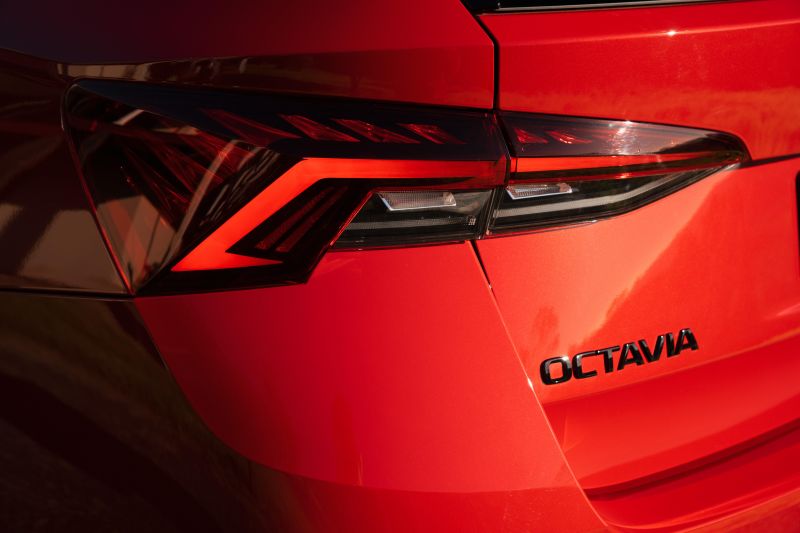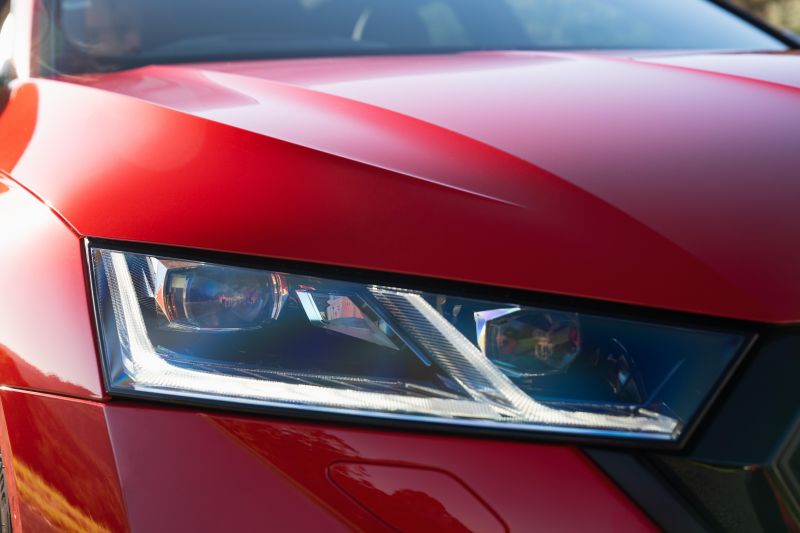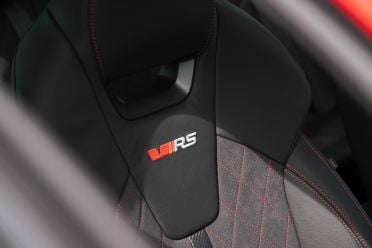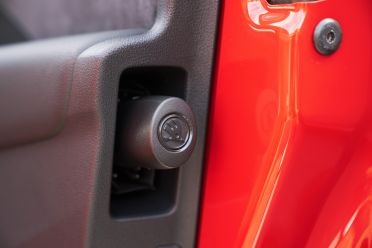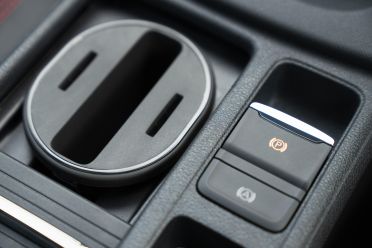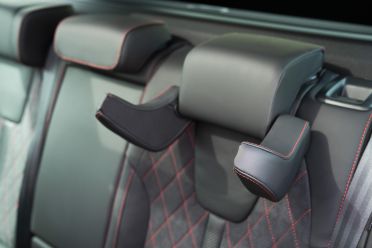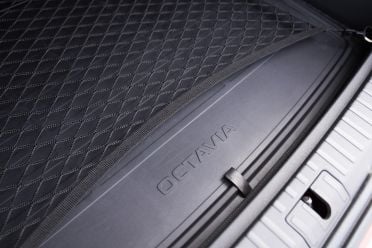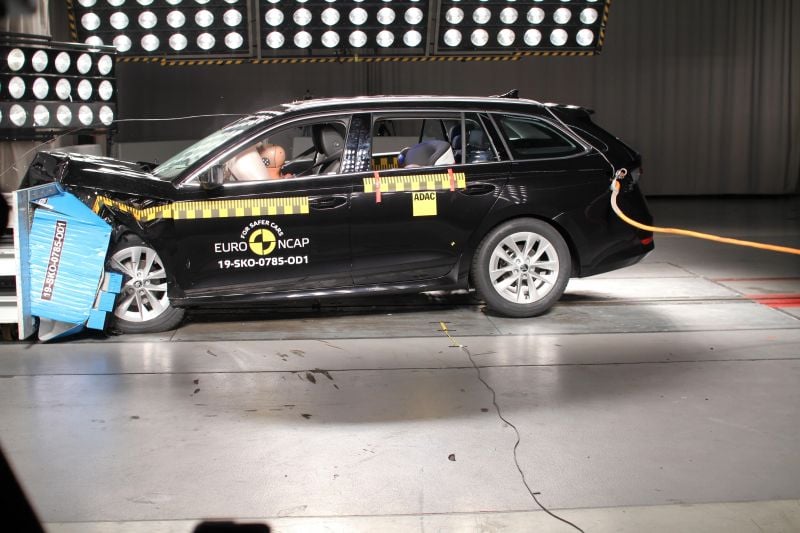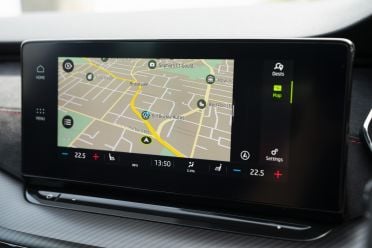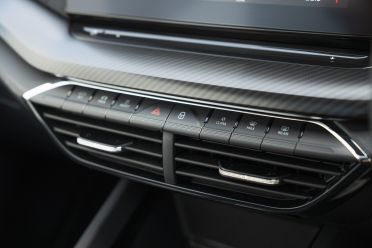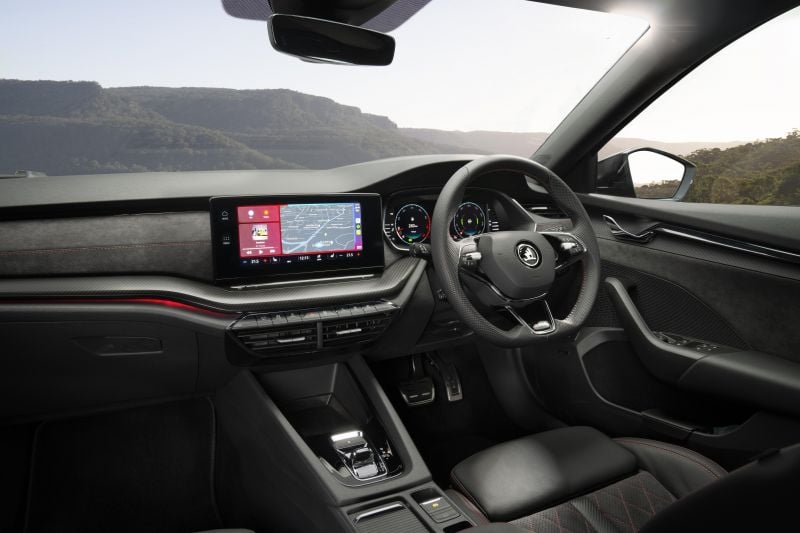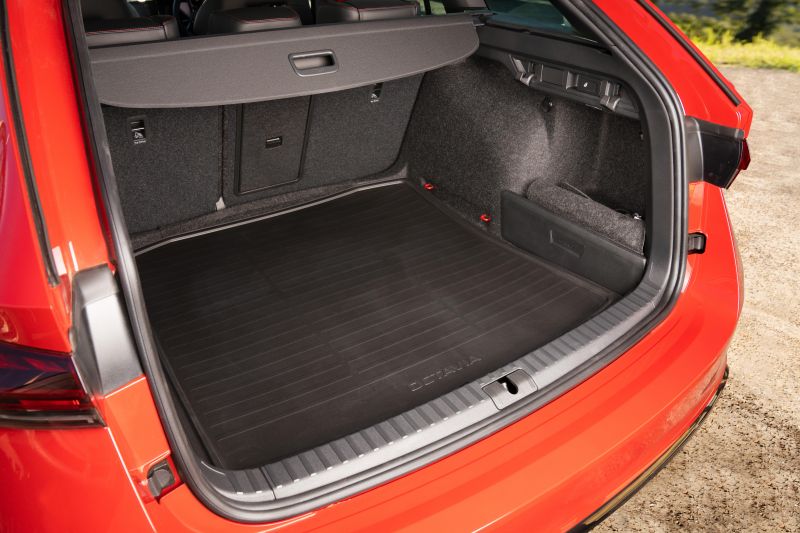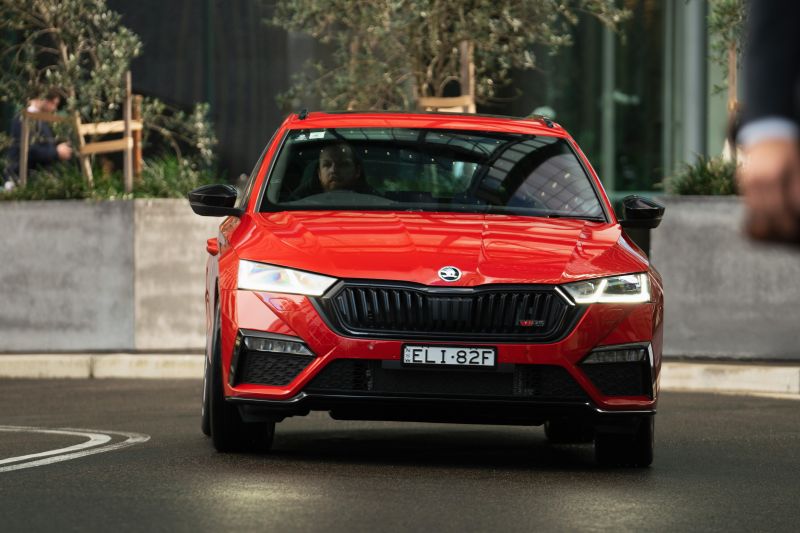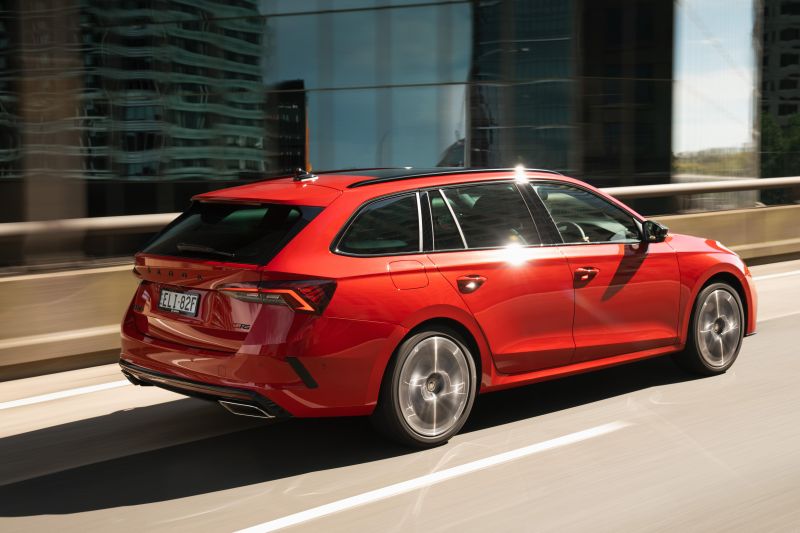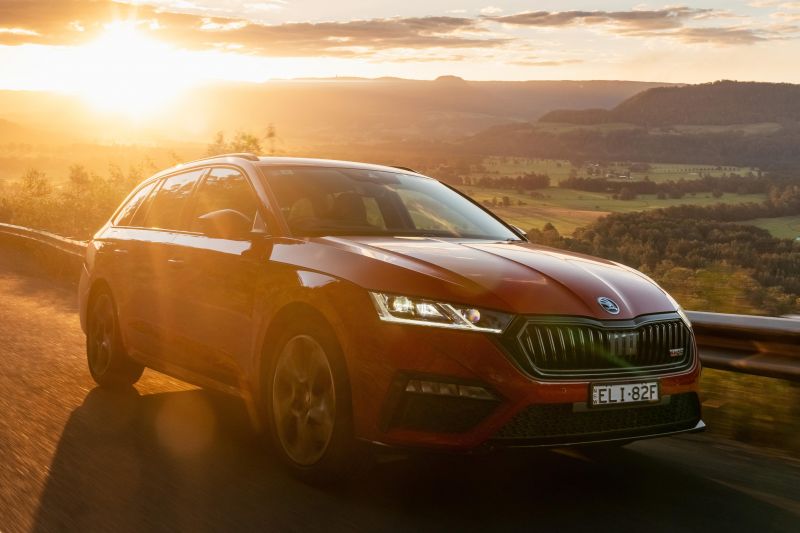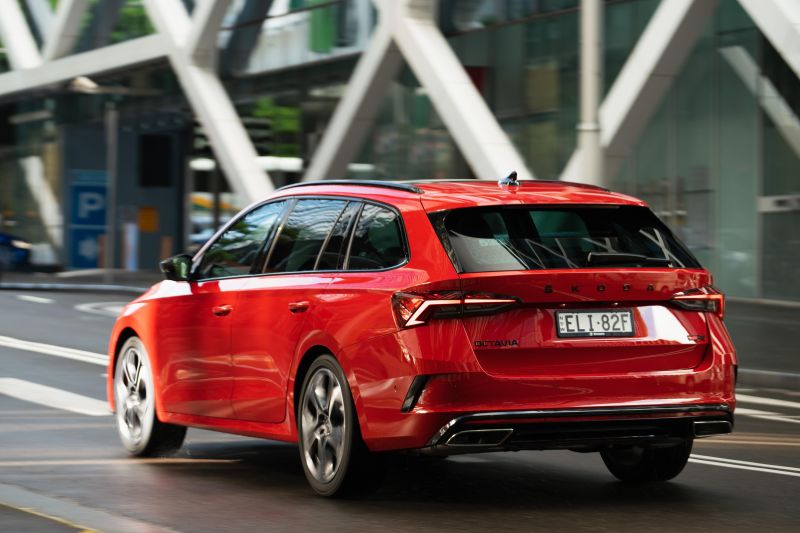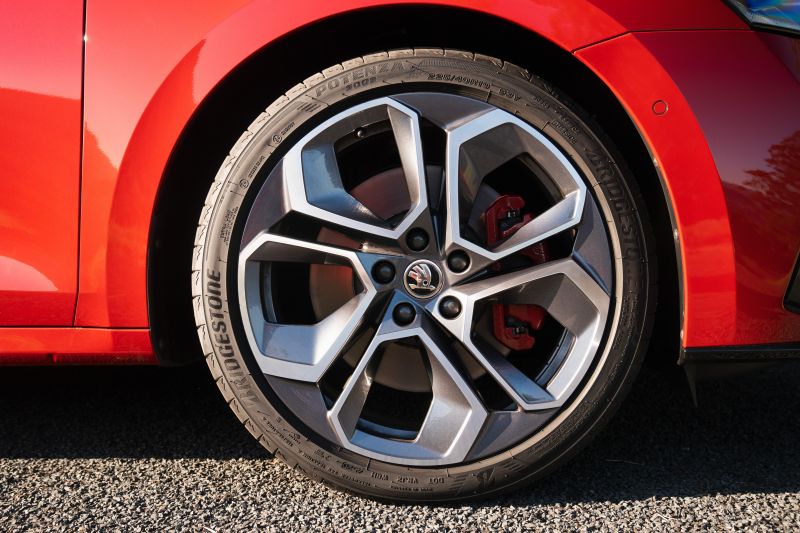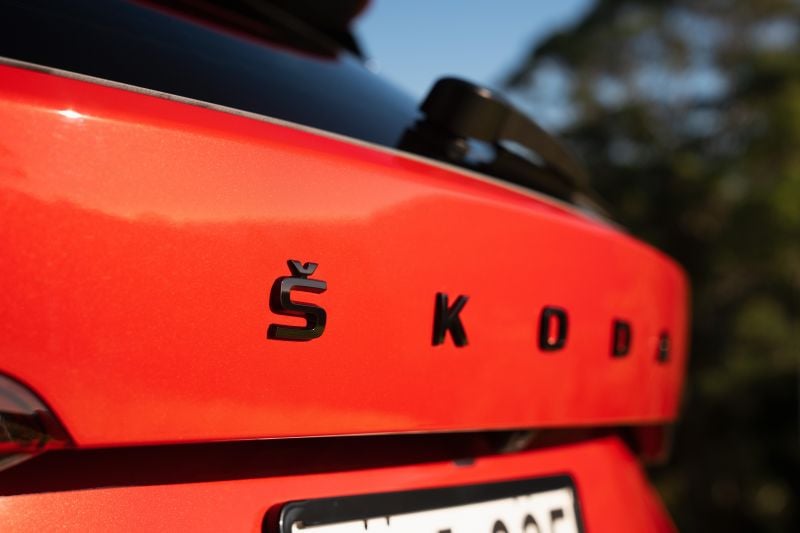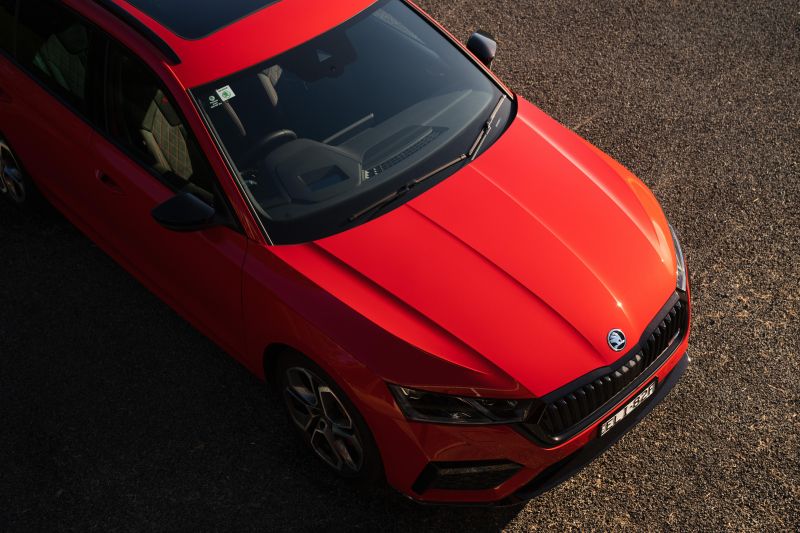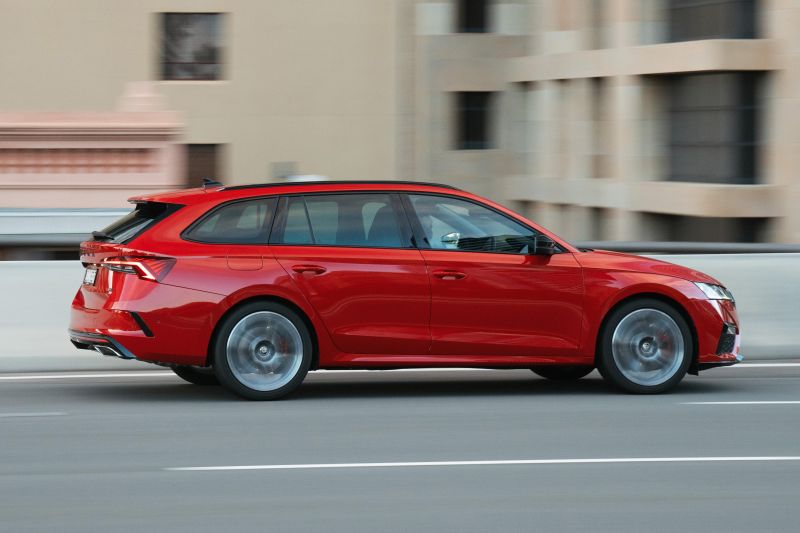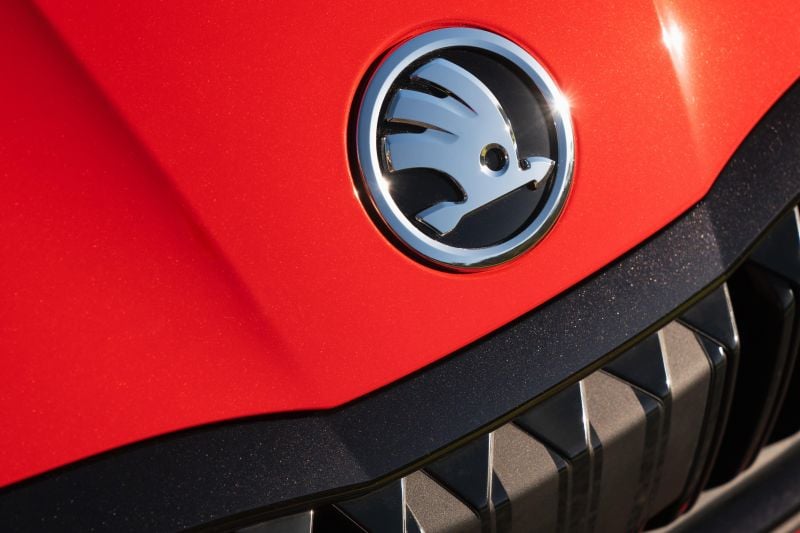You’re looking at the thinking man’s Volkswagen Golf GTI.
Skoda is known for making well-priced, well-specced alternatives to what’s on offer from Volkswagen, Hyundai, and Mazda.
Sales are growing and oddball products like the Yeti have been consigned to history, but it’s still a bit of an enthusiast brand in Australia… and what could be more enthusiast than a high-performance wagon?
The wagon in question is the new 2021 Skoda Octavia RS.
Like the wider Octavia range it’s all grown up for 2021 with a bolder new look and a higher-tech interior, along with a steeper sticker price to match.
Does the new Octavia RS have the substance to back up its more stylish exterior and more expensive list price?

How much does the Skoda Octavia RS cost?
The new Octavia RS wagon just sneaks in below the $50,000 mark before you start with the options.
You’ll pay $47,790 before on-road costs for the regular Octavia RS liftback, while opting for the wagon will set you back $49,090 before on-road costs.
Two options are available on the RS wagon. The first is the Premium Pack ($6500), which brings:
- Adaptive chassis control
- Electrically-adjustable driver and passenger seat with memory
- Head-up display
- Kick-operated power tailgate
- Premium Canton sound system (12 speakers)
- Heated front and rear seats
- Park assist
- Massage function for driver’s seat
- Driver cushion depth adjustment
- Drive mode selection
- Three-zone climate control with front and rear controls
- Mechanical sunblinds for rear windows (standard on Wagon)
- Electrically adjustable, heated and folding door mirrors with memory and auto-dimming
A panoramic sunroof is an extra $1900.
Our tester had both fitted, bumping the as-tested price to $57,490 before on-road costs.
That’s steep for a Skoda, no doubt about it, but it’s not wildly off the mark in the Volkswagen Group world.
The new Volkswagen Golf GTI is priced from $53,100 before on-road costs, and with the Luxury Package fitted matches the the Octavia RS almost perfectly for price at $56,800 before on-road costs.
Both share the same 2.0-litre engine, but the Octavia is larger and more practical than the Golf.
What do you get?
The Octavia RS is well-equipped. Then again it would want to be, given it’s more the $50,000 on the road without any options fitted.
Like the wider Octavia range, the range-topping RS packs a 10.0-inch touchscreen infotainment system with wireless Apple CarPlay and Android Auto, but gains a factory satellite navigation system to go with them.
There’s also a Virtual Cockpit 10.25-inch digital instrument binnacle with RS-specific graphics.
The headlights are LED matrix units, entry and start are keyless, and the wing mirrors are auto power-folding.
Along with the usual range of safety assists (more below) the RS packs semi-autonomous parking assist, front and rear parking sensors, and an alarm.
There are roof rails on the Octavia wagon, and the tailgate is powered as standard.
The Octavia RS has a unique sport chassis that’s 15mm lower than stock, progressive steering, 19-inch alloy wheels, red brake calipers, and black exterior details.
A mix of leather and fabric trim is standard, as is carbon-style trim on the dashboard and Alcantara on the doors.
Opting for the Premium Pack ($6500) fitted to our tester gets you adaptive dampers, and powered front seats with memory, heating, massage, and extendable under-thigh support.
It also brings a head-up display, a kick-operated power tailgate, a 12-speaker Canton sound system, heated rear seats, parking assist, and tri-zone climate control.
The panoramic sunroof fitted to our tester added $1900 to our list price.
As for the Simply Clever Skoda bits?
There’s an ice scraper in the fuel flap, fold-down headrest extensions for sleeping kids, an umbrella in the door, mechanical sun blinds in the rear seats, a parking ticket holder on the windscreen, and a huge range of nets and tie-down points in the boot.
Is the Skoda Octavia RS safe?
The 2021 Skoda Octavia has a five-star ANCAP safety rating based on tests conducted by the Euro NCAP sister firm.
It scored 92 per cent for adult occupant protection, 88 per cent for child occupant protection, 73 per cent for vulnerable road user protection, and 79 per cent for safety assist.
Eight airbags are standard in the regular range, including a central airbag, but moving to the Octavia RS takes that airbag count to 10.
Standard safety equipment includes:
- Emergency assist
- Blind-spot monitoring and assist
- Rear cross-traffic alert
- Adaptive cruise control
- Autonomous emergency braking with pedestrian and cyclist detection
- Rear parking sensors
What is the Skoda Octavia RS like on the inside?
The whole Octavia range has taken a huge step forward for 2021, but the RS wagon is on another level again.
The caveat? Much of the really high-end stuff on test here is part of the Premium Pack, and adds $6500 to the starting price.
Compared to the upright design of the outgoing model, the wing-shaped dash and sweeping lines of the 2021 Octavias interior make for a much more premium space.
As is becoming common, most of the buttons have been nuked for 2021.
In the case of climate control, the physical buttons have been replaced with touch buttons at the base of the 10.0-inch infotainment screen for temperature, and a sub-menu within the system for finer adjustments.
The volume knob has been axed in favour of a touch slider at the screen’s base, while vehicle controls such as auto start/stop and stability control are buried in the heart of the infotainment.
Although the cabin looks super clean, it’s a huge step backwards for day-to-day usability.
Want to actually take charge of the air-conditioning and set the fan speed? That’s at least two prods.
Want to change the radio station or change inputs when you’ve fiddled with the air-conditioning? That’s two more pokes, and more eyes-off-road time.
Even the sunroof is controlled by a touch slider on the roof that’s way too easy to miss – and when you do miss it, you end up turning on the touch-activated dome light. It’s utterly infuriating.
It’s a shame, because the technology has the potential to be good. The central screen is high-resolution and super snappy, and the driver’s display is still one of the best in the business.
The rest of the cabin is a lesson in getting the basics right. The bucket-style front seats are as good to look at as they are to sit in, and the ergonomics are excellent for drivers of all shapes and sizes.
Storage spaces abound. There are big (felt-lined) door bins, a (felt-lined) drawer for garage keys to the right of the steering wheel, a wireless phone charger below the dash, and a spacious central storage bin up front.
The driver’s door pocket is home to a small bin that’s perfect for gum-chewers and kit-kat-munchers like me, and even the glovebox is large and spacious.
Rear legroom is excellent. We sat six-three Mike Costello behind another six-five adult and both fit without two much whining, while headroom is accomodating for lanky frames even with the panoramic sunroof fitted.
As you’d expect there are air vents back there, along with mechanical sun shades for hot summer days.
Along with the usual fold-down central armrest there’s fold-down additions to the headrests to allow children to sleep comfortably back there, and niceties like smartphone-sized pockets in the seatbacks. It’s a great place to spend time.
Boot space is 640L with the rear seats in place and a whopping 1700L with them folded.
It’s a thoroughly practical space, with an abundance of hooks and nets to secure your load.
The boot space is also low and wide, which makes dropping heavy items in an absolute breeze. Golf clubs and full-sized road bikes both fit effortlessly.
Like the larger Superb Scout, the Octavia RS features a clever sliding luggage cover that automatically retracts halfway, and then eventually all the way, with a gentle touch from the owners.
What’s under the bonnet?
The range-topping Skoda Octavia RS draws on a 2.0-litre four-cylinder turbocharged petrol engine with 180kW of power and 370Nm of torque.
The engine is shared with the Volkswagen Golf GTI.
It’s front-wheel drive, but uses a seven-speed (wet-type) dual-clutch transmission and has an electronically-locking front differential to help it put the power down.
Claimed fuel economy is 6.8L/100km on the combined cycle, we saw 7.4L/100km on a mixed drive loop including some hard driving.
How does the Skoda Octavia RS drive?
This is a new car, built on new bones compared to the outgoing Octavia, but it still feels familiar from behind the wheel.
That’s because it’s built on a variation of the platform underpinning everything from the Golf to the Ford Everest-sized Volkswagen Atlas SUV sold in the USA.
The EA888 2.0-litre petrol engine is also shared with the Volkswagen Golf GTI.
Of course the Octavia can’t just be a Golf clone. It needs to be more practical and grown up to fit its wagon body, without sacrificing too much in the way of athletic ability.
That’s a tough job description, but the boffins at Skoda have delivered.
With adaptive dampers fitted (part of a $6500 options pack) the Octavia RS soaks up the worst of the city with aplomb, filtering out most lumps and bumps in both Normal and Comfort modes.
Sharp expansion joints and potholes occasionally undermine the refinement, making their presence felt in the cabin.
It’s far from a deal-breaker, given the ride is generally excellent for a family car running a sports suspension setup and 19-inch wheels.
The strengths of the Volkswagen Group’s turbocharged 2.0-litre engine are well known, and they still ring true here.
Even with fewer than 1000km on the odometer it pulls smoothly and strongly from just above idle, and has something to offer drivers who want to chase the redline.
It’s perfectly matched to the seven-speed dual-clutch transmission, which feels snappier in 2021 Octavia than in previous iterations.
Skoda has managed to iron out most of the low-speed awkwardness that once plagued dual-clutch Volkswagens, so it moves smoothly away from the mark and shifts quickly and decisively once you’re rolling.
Normal, Comfort, and Eco modes all see it shuffle quickly to a taller gear in search of fuel savings, but the engine is has enough torque that you’re never short of performance.
The paddles are still short-throw plastic units that, although not the last word in tactility, let you take charge of the car with lightning shifts. Holding the left-hand paddle also makes the transmission grab the lowest gear available.
Lean really hard on the throttle in automatic mode and the RS snaps down a gear or two, throwing you into the meat of the engine’s power band. It isn’t neck-snappingly quick, but there’s more than enough shove to put a smile on your dial.
Does your family car really need to hit 100km/h faster than the 6.7 seconds the RS will manage? Probably not.
Traction is surprisingly good for a powerful front-wheel drive car, thanks in no small part to the clever electronic differential lock fitted standard to the RS.
It builds on a mechanical differential by using its electronic brain to brake the inside front wheel when it detects slip, and send more power to the outside front wheel to cut understeer.
In practice it makes for a front-drive car where you can use most of the performance, most of the time.
Even in wet conditions you’re able to tap into the torque on tap from the 2.0-litre engine, and torque steer is almost non-existent in a straight line.
The traction control is quick to react when your right foot’s ambition outweighs the available grip, although the buttoned-down electronics do stop the RS from ever feeling truly wild.
Flick into Sport and start pushing hard, and the Octavia RS delivers the same sure-footed feeling we’ve come to expect from the Golf GTI.
The nose is keen to turn, and there isn’t much in the way of understeer unless you get wildly optimistic with your entry speeds.
It can even be bullied into rotating (slightly) from the rear if you’re willing to trail brake into a corner and be firm with the front end, although that’s not really where it feels most comfortable.
This is a fast way to cover the ground, but it’s not the last word in white knuckle excitement.
That’s okay. Its talents in the city – and on the highway, where it’s solid and uber-quiet at speed – are central to the Octavia RS’s appeal, and always have been.
How much does the Skoda Octavia RS cost to run?
Maintenance in the Skoda Octavia is required every 12 months or 15,000km.
A three-year service plan costs $800, and a five-year plan will set you back $1400.
Like the wider Skoda range, the new Octavia is backed by a five-year, unlimited-kilometre warranty.
CarExpert’s take on the Skoda Octavia RS
The new Octavia RS is talented enough to justify its price tag, although whether punters are willing to pay $57,000 for a fully loaded Skoda remains to be seen.
The big leap in the 2021 RS hasn’t come in the drive, which still blends talent in the corners with the refined daily-drivability you’d expect of a performance car from BMW or Audi.
Instead, it’s come in the cabin. The quality of the new RS from behind the wheel is exceptional, and it’s lost none of its trademark wagon practicality.
It’s not perfect. Volkswagen Group has some work to do if it plans to stick with the touch-only approach currently rolling out across its brands, because much of the technology in the new Octavia is far more frustrating than it needs to be.
While we’re whining, it’s a shame the adaptive dampers of our tester are hidden in a $6500 options package full of nice-to-have features that aren’t essential.
Don’t let that detract from this car’s appeal, though.
It’s still the thinking man’s Golf GTI, and arguably the perfect daily driver.
Click the images for the full gallery







